Some years ago my late father handed me a cardboard box containing 100’s of his father’s negatives dating from the 1920’s onwards. The vast majority in bulk and number are 4¼” X 3¼” (quarter plate) nitrate film negatives together with a few ¼ plate glass negatives, some of the former clearly shot with a Kodak Autographic 3 camera. However packed tightly into a small box from Lyons’ Strand Corner House, telephone Whitehall 7373 if you want to book a table, were twenty or more rolled 35mm films. In most cases several whole un-cut films tightly rolled together, some with a long ‘Leica leader’ still attached. I examined several of them but the condition of the negatives and tight rolling made it difficult to ascertain much about the contents so I put them to one side.
Recently, I found them again and decided to cut them and store them flat in negative file pages and while doing so scanned as many as I could. They didn’t scan particularly well, much of the trouble came from trying to scan a negative that has been rolled tightly and not looked after for 85 years. I manage to get it flat-ish, then it just pops into a curve the other way like a retracting tape measure. The Agfa film featured here has a thin base and has scanned the best of all, though not without problems.
In 1929 my grandfather bought an early Leica while on a trip to Germany, and he used it throughout the 1930’s and then after the war until it was stolen in the late 1940’s. All but a few of the films seem to have been taken with this camera and almost all date as far as I can tell from around 1930 to 1942. Mostly each film is a jumble of different faces and locations; my father and uncle as young children, other family members, people and places, some familiar and identifiable, others not. Often the film appears to have been in the camera for quite some time as shown by winter turning to spring by the end of the roll, but a few were taken over a short period and these usually feature a walking trip or holiday somewhere in Britain or Europe. None have any information regarding date or contents directly associated with them.
The following photographs are all from one roll of Agfa Isopan F (40 ISO) and document a road trip taken by my grandparents through the French Alps. Exact dating is difficult though some help comes from the car featured, a Ford Model C 10 which I think he bought in 1935 and still had at the end of the war. Amongst the other films in the box were a couple that are likely to be from the same journey. At the end of one film are a few frames of the car being loaded via crane onto a cross-channel ferry at Folkestone, the rest of that film being photos of friends and family, including my dad aged about 5 or 6 which most likely dates it to 1938. The other is a film starting with photos of Grasse and then Monaco, ending with street scenes of a town that is probably Puget-Théniers. Same car and the same travelling companions. Otherwise I have pieced together the journey from the images themselves.
It says something of my grandfathers ability, and the quality of the Leica that of the 39 frames there is only one complete dud, this where he has forgotten to extend the collapsible lens. With one or two focus is a bit out, and there is camera shake in a few of the images. Exposure is good though in all the frames. Only one image is repeated, why I can’t really see as the first is the best and it is one of the least interesting on the film. I present 37 of them here with only the worst scratches removed and with only minor contrast and exposure tweaking.
They were travelling with another couple, who appear in a number of frames. They are familiar faces from other negatives of around the same time mostly of walking trips, including to the Austrian Alps in 1937, but nowhere are their names recorded and I have so far been unable to identify them. My grandfather clearly thought they would not be forgotten, but then again he has some negatives with labels such as ‘Mary and Sylvia at…’, when Mary was my grandmother and Sylvia his sister, so there is no telling. Many of the ¼ plate sized negatives have at least the date and location either on the envelope, or with the Autographic images as metadata on the negative, but the 35mm negatives came with no information at all. It does show the value of keeping records with photos even if it is for generations yet to come. Some of the images Grandpa printed as post cards (Ilford Bromide postcards, normal white, velvet finish) a few with information written on them, but they were apparently printed in 1954 by which time some of the locations had clearly become muddled.
The first 12 frames are of the medieval walled town of Entrevaux in the Alpes-de-Haute-Provence, with scenes that won’t have changed much in centuries yet alone in the 85 years since these were taken. The photo of the ladies loading a donkey is blurred and the one of the lady in the archway does have camera shake. Possibly my favourite from the whole film is the two women outside the hairdressers, my grandmother on the left with the mystery woman.
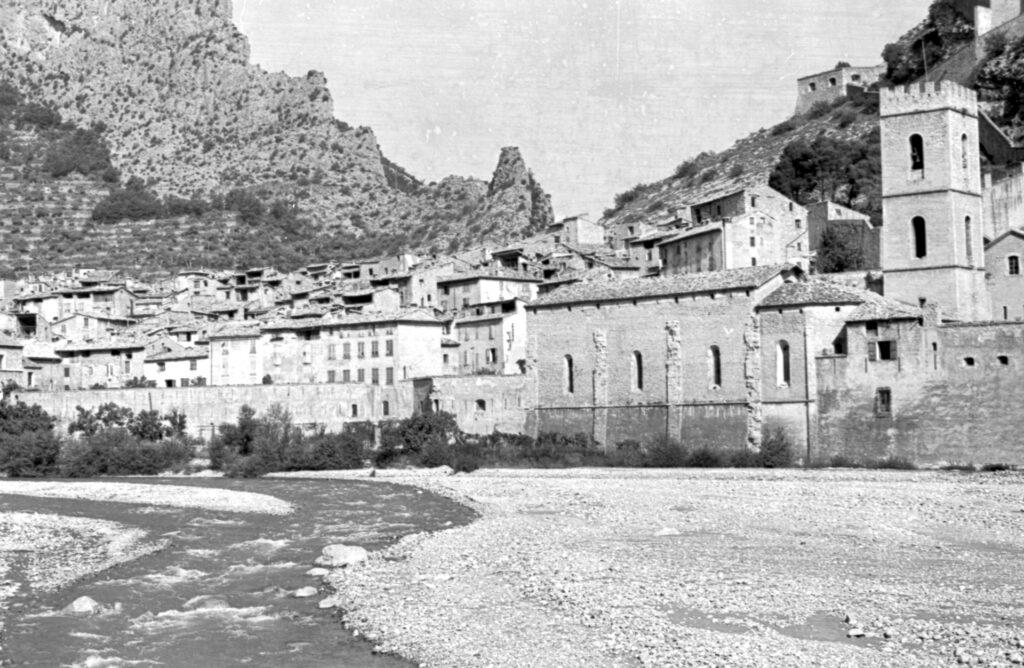
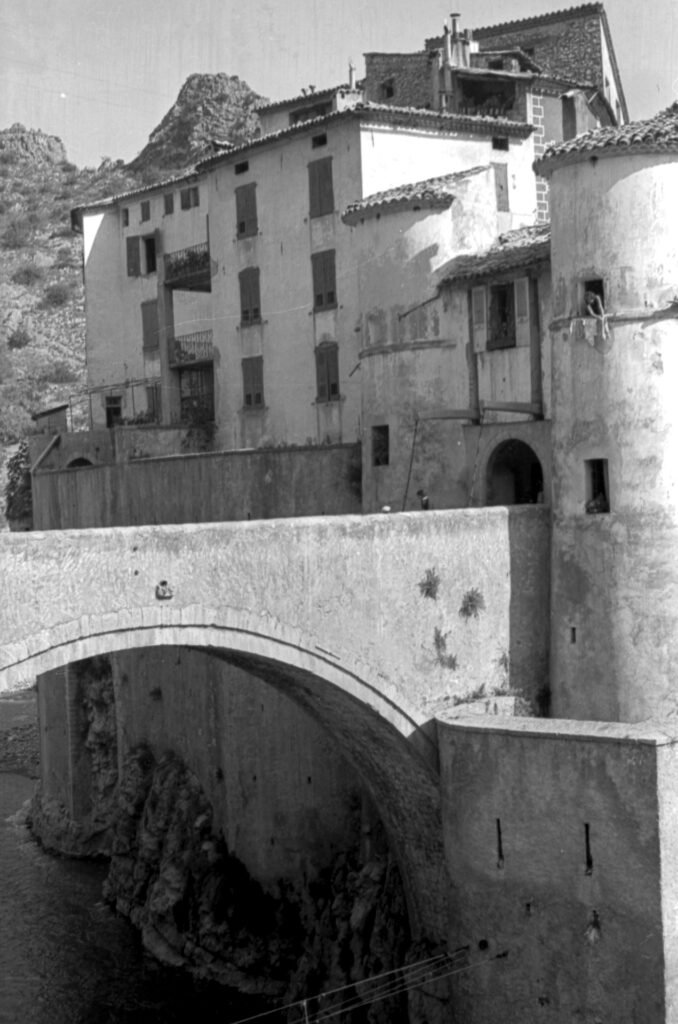
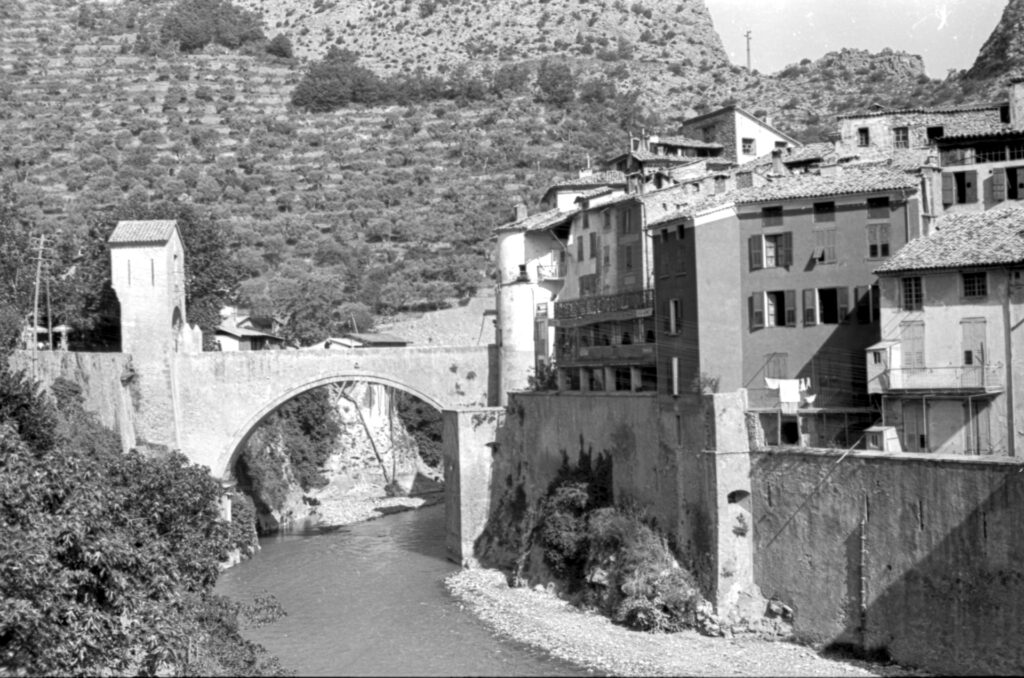
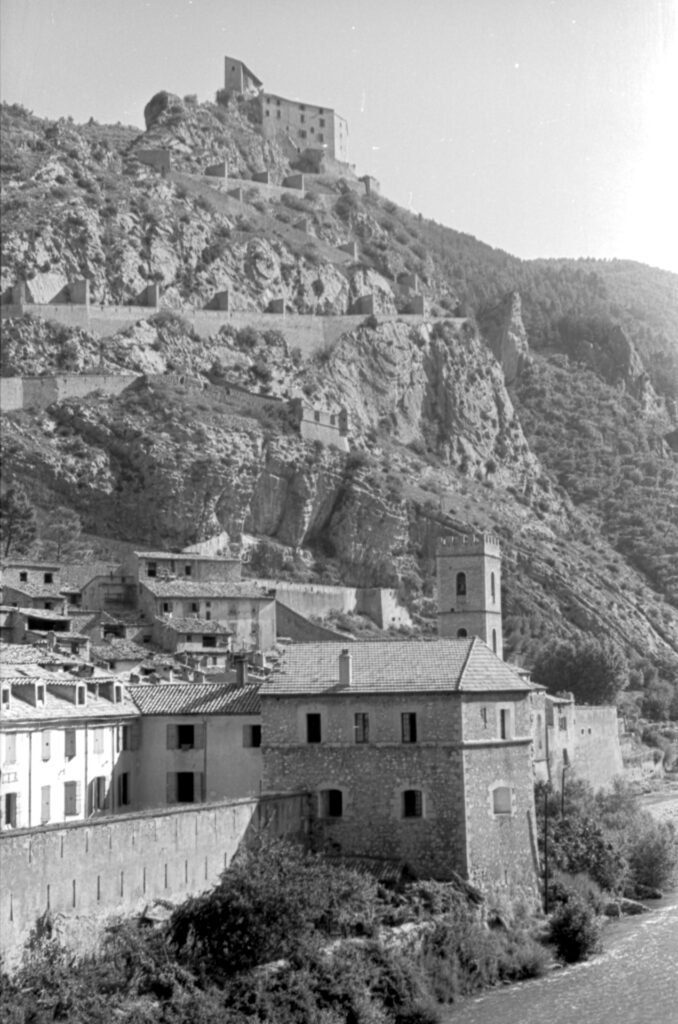
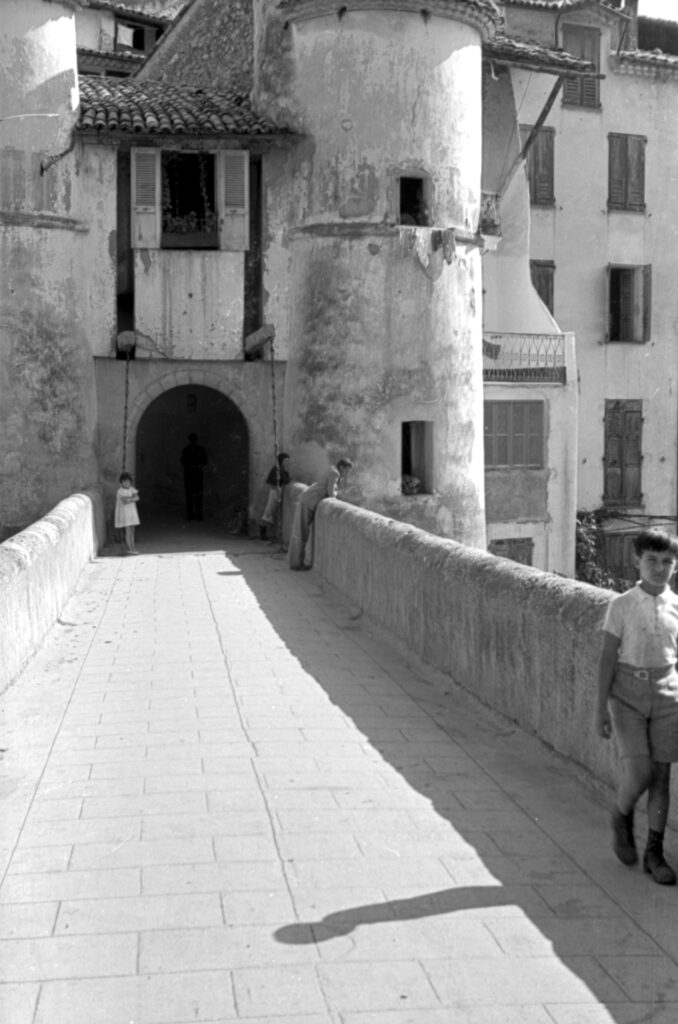
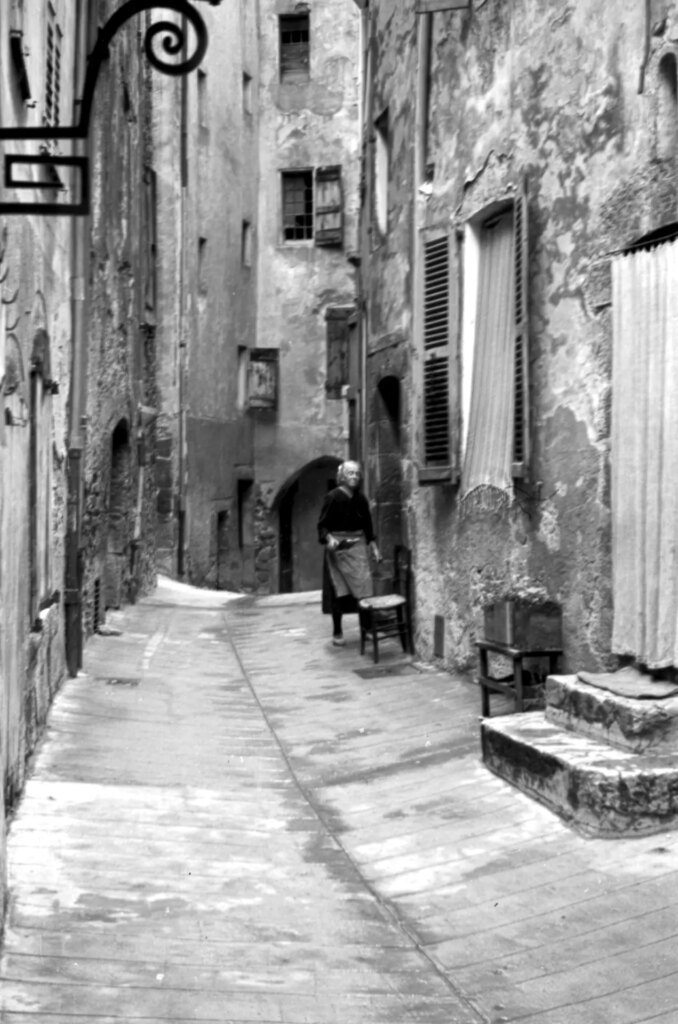
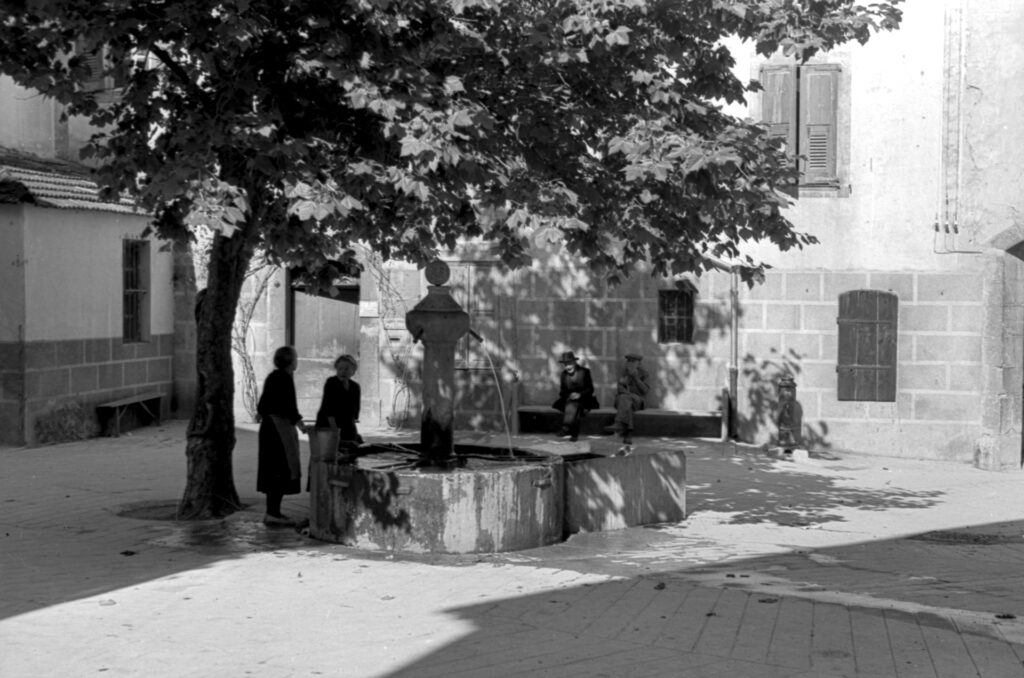
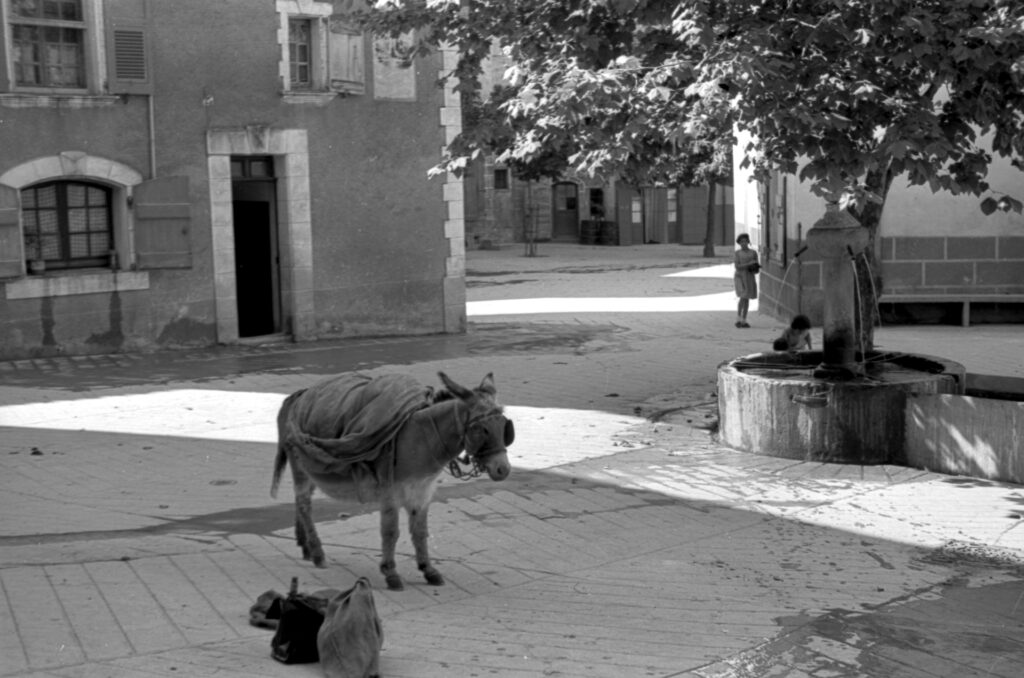
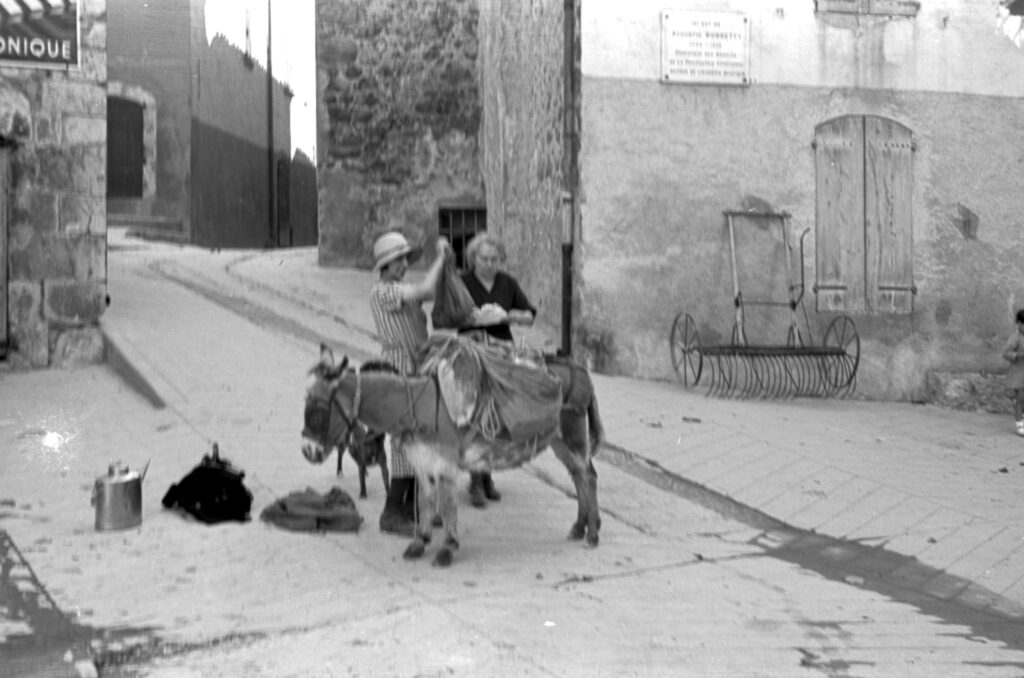
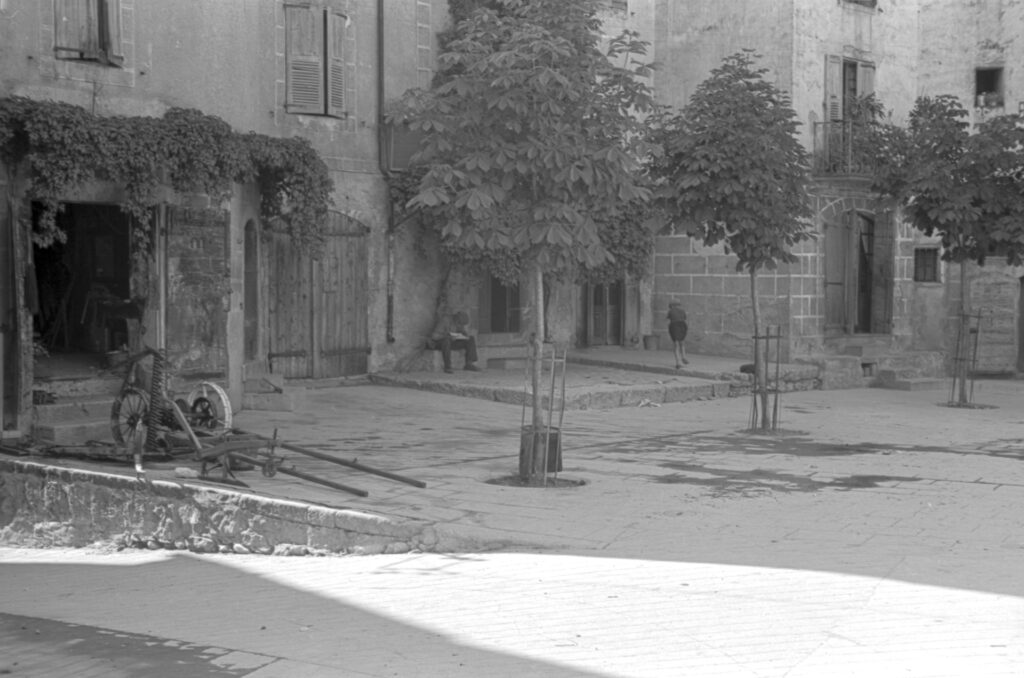
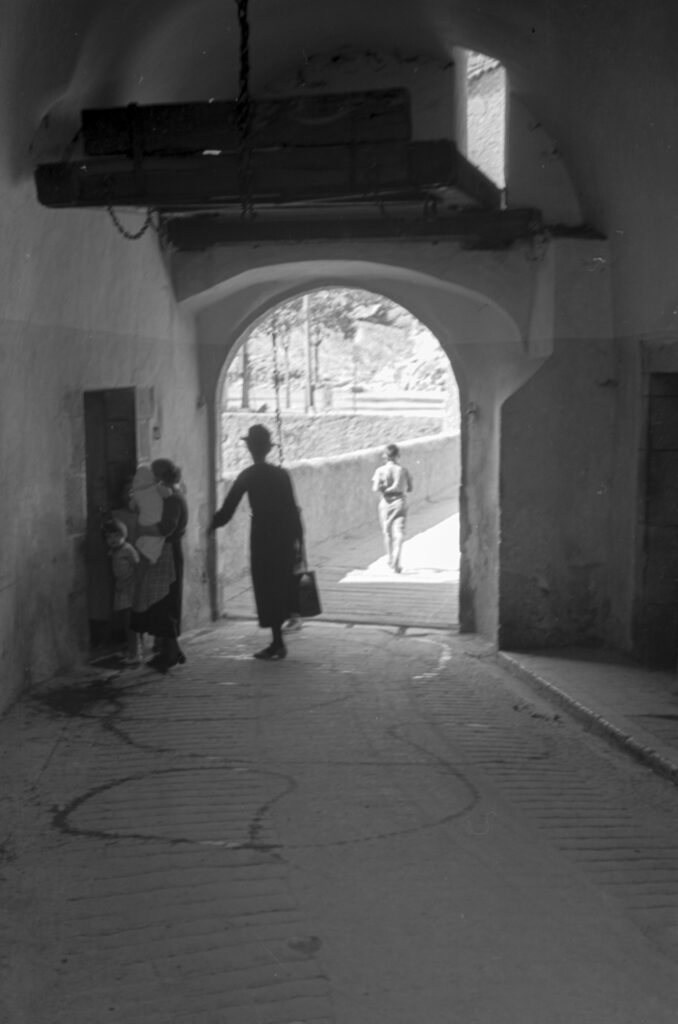
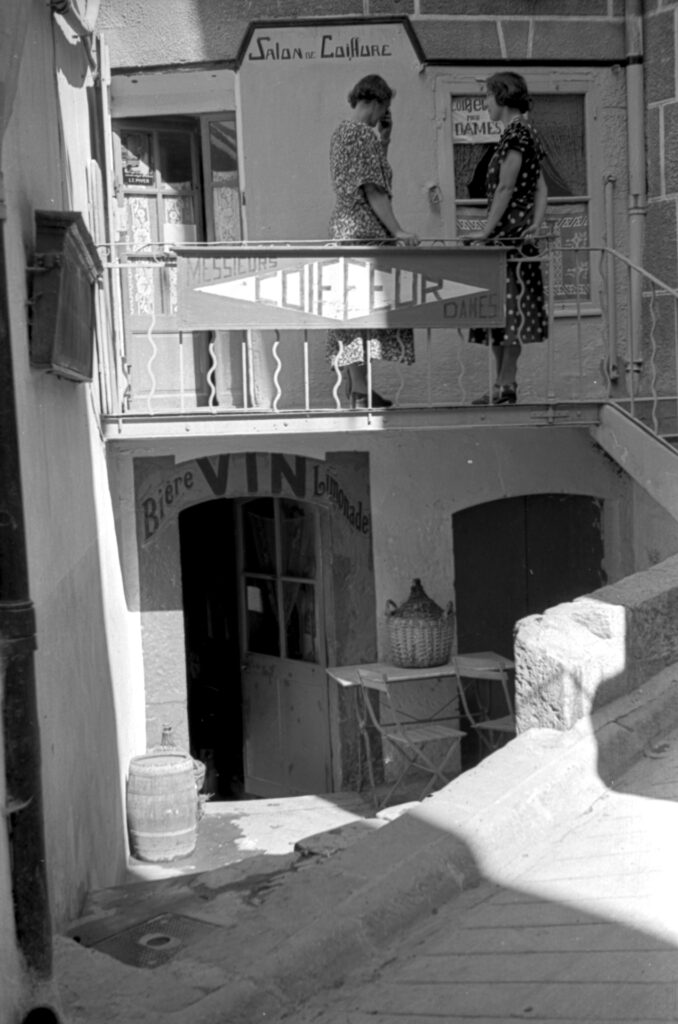
From Entrevaux they travelled north on the D2202 as 3 photos from the Gorges de Daluis show. Probably all three were taken from near the same spot, the last shows the Pont de la Mariée, a tourist attraction then as now. Question: would an accident have been so readily assumed had it been the bridegroom that fell?
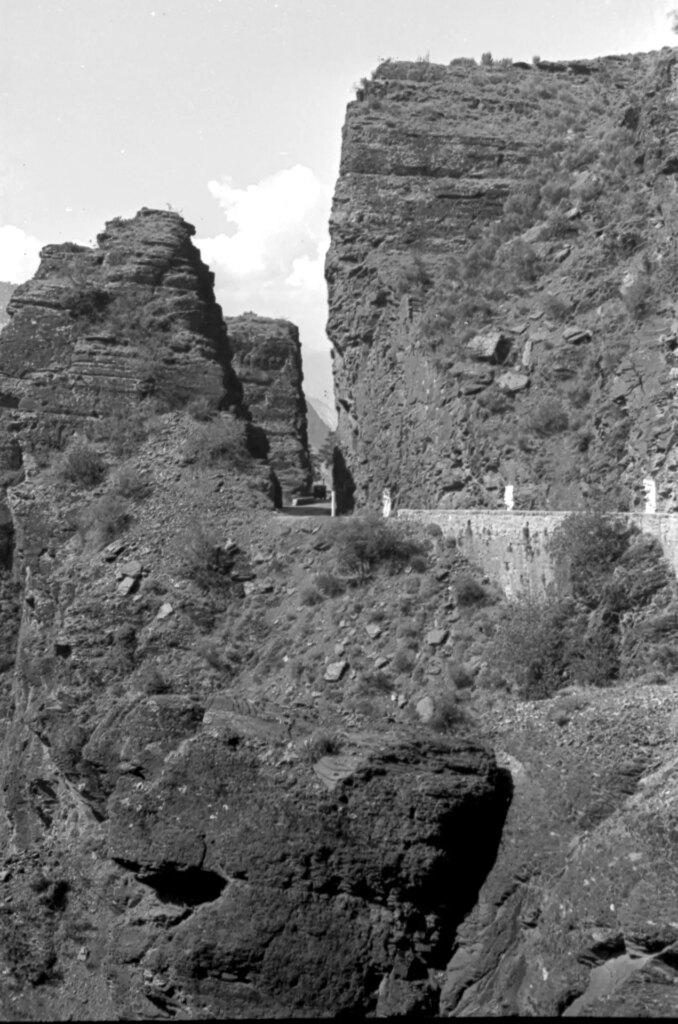
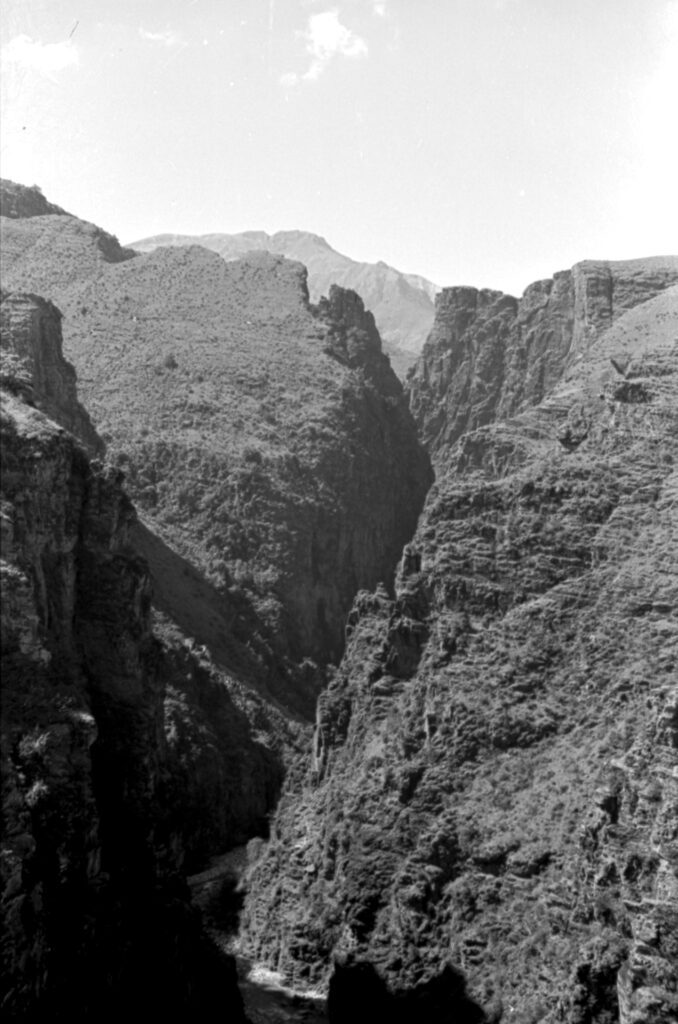
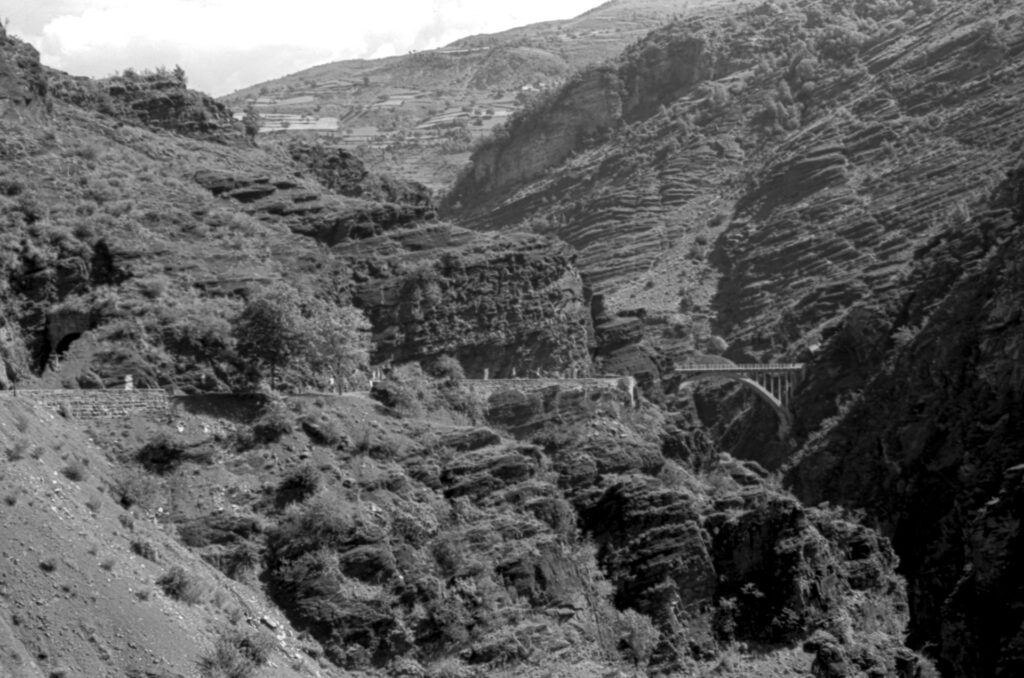
Then over the Col de la Cayolle and onto the D902. The next stop is 30 miles further north, three images from spots on the descent into Bayasse.
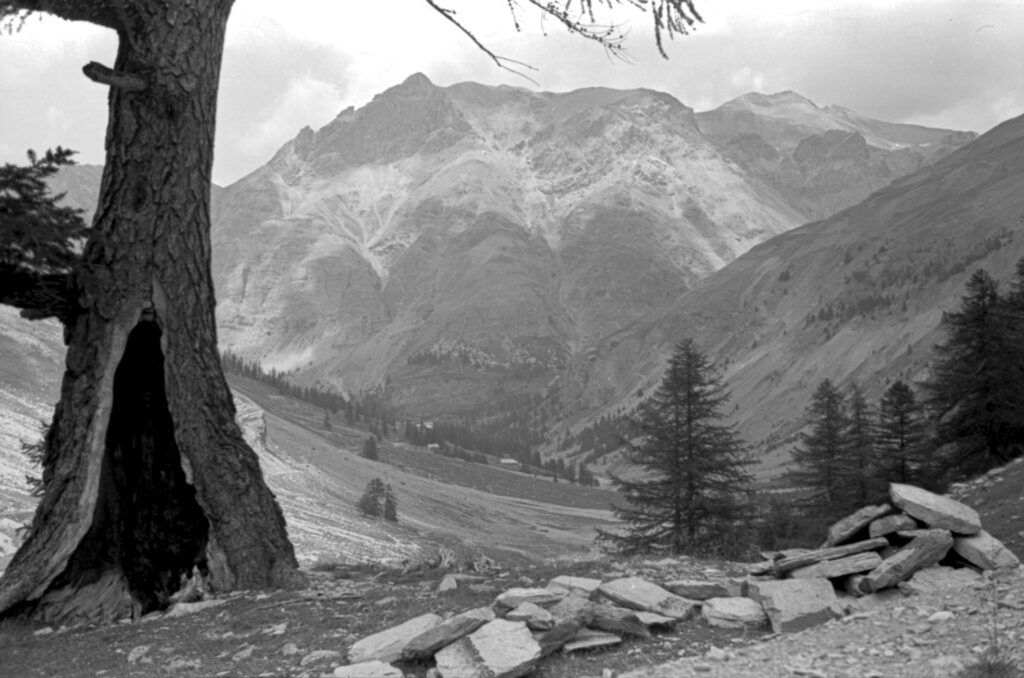
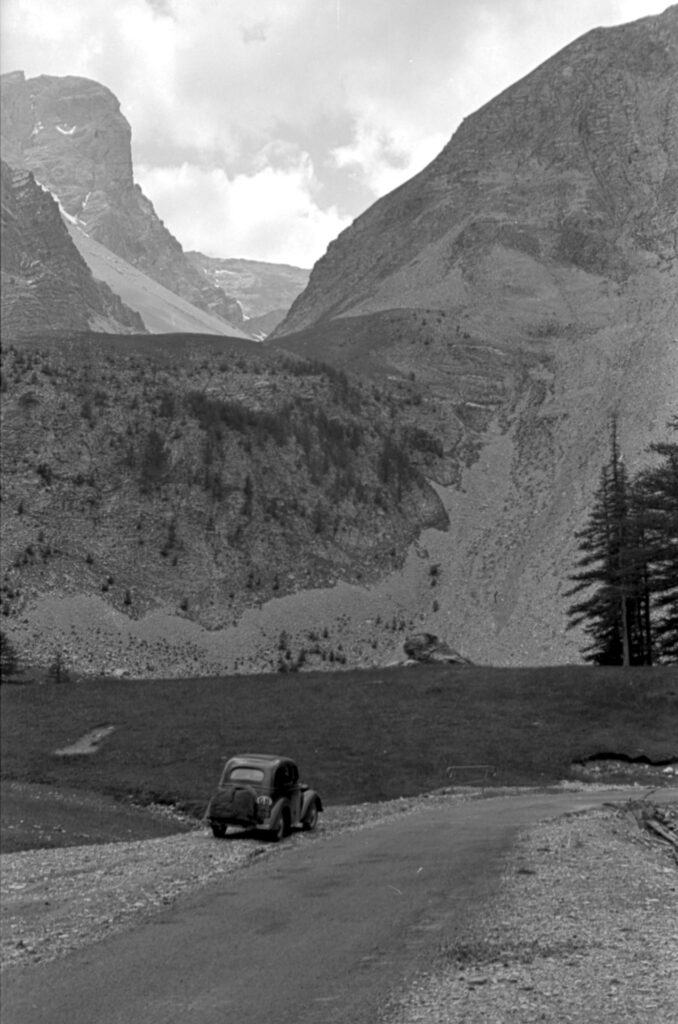
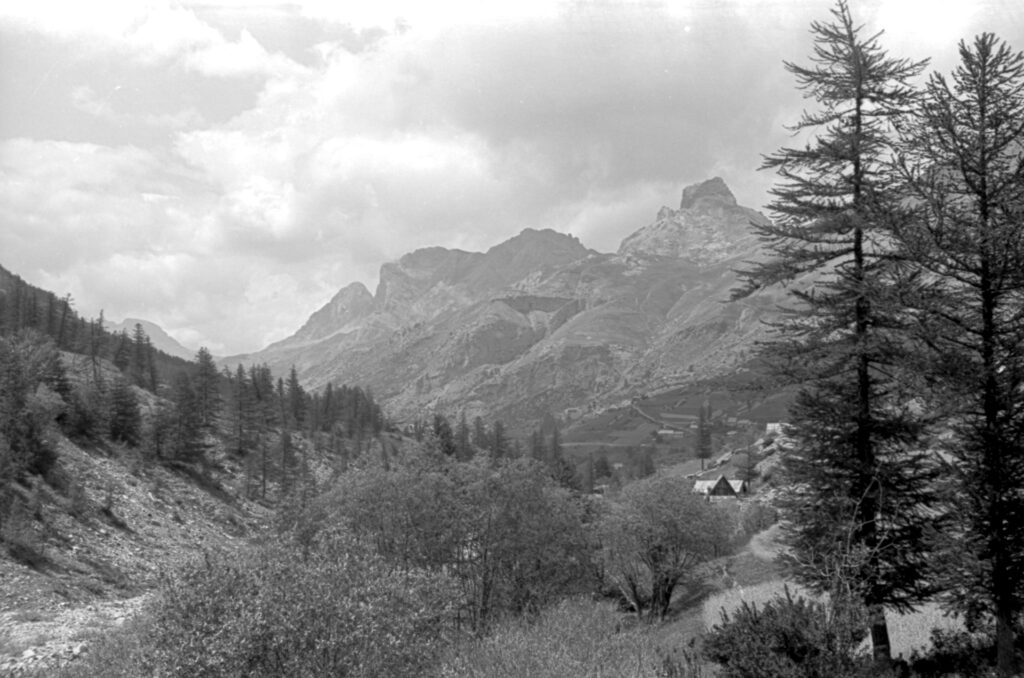
(Amendment. As I expected someone was able to give the correct locations of the first three photos below. They are on a descent into Guillestre from the Col de Vars further north in the Durance valley, not where I thought and not where it says in the paragraphs below. So the views below are still much the same now and not drowned under the reservoir. My sentiments remain mostly true but they did go through Barcelonnette and follow a logical route. Thanks to Nikojorj.)
For a long time I had a problem after Bayasse, I couldn’t locate the next 5 photos at all. Logically they would show the descent into the Ubaye Valley and perhaps ending in an over-night stay in Barcelonnette. But the descent appears to be heading south, not north, and the steep street is not Barcelonnette. So where they went was a mystery, but the photos that follow these are from the Col du Galibier 90 miles further north, with two or more possible routes and several towns on the way including Briançon. I thought the Lac de Serre-Ponçon might be confusing things and eventually I managed to identify the locations of the first 3 as on a descent into the Durance valley on the north side of what is now the huge reservoir. Imagine the whole of the valley below in frame 20 submerged. But how did they end up going south back towards where they had come from before turning to follow the Durance northwards?
At this point I realised that maybe the photos only show part of the story of their journey. Possibly several days have elapsed since the camera was last used, if the weather was dull or wet and with 40 ISO film Grandpa may have kept his camera in his pocket. It looks bright enough in 19, 20 and 21, but 22 which seems to be another location, (and 23 which is the same as 22 but with camera shake) shows threatening clouds. The car parked on the hairpin bend in frame 21 has large rocks chocking the front wheels. Not for the first time I wondered about driving a small car laden with 4 adults and luggage on narrow, un-made mountain passes with 30h.p., 3 gears and, just possibly, brakes of some sort. The final image with the steep street is indeed Briançon, where sadly the ‘Kodaks’ sign is no longer visible on Streetview.
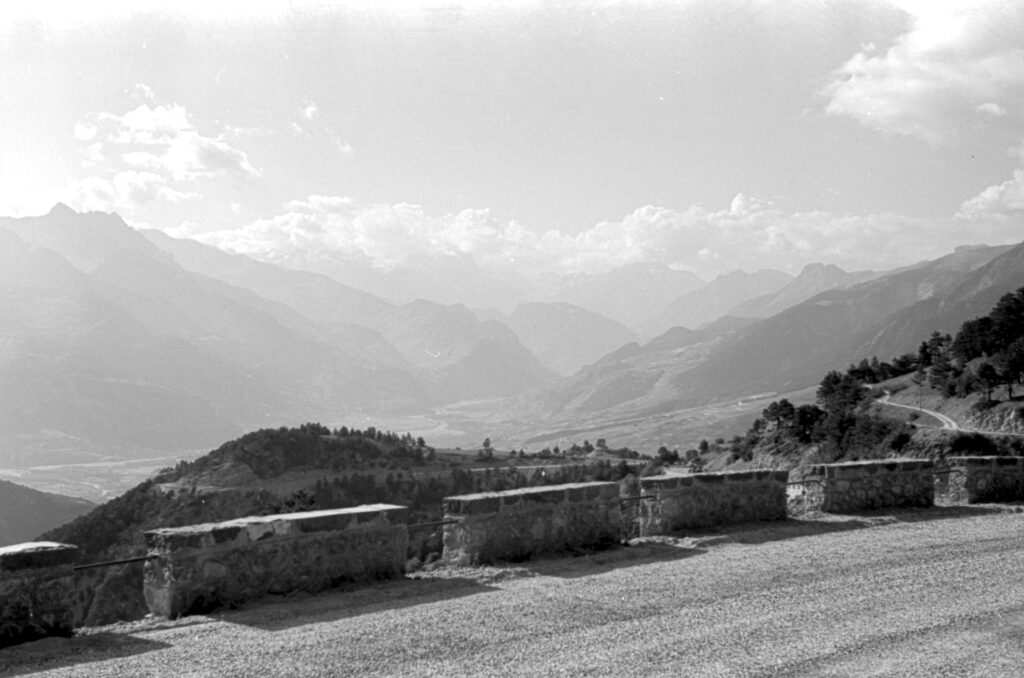
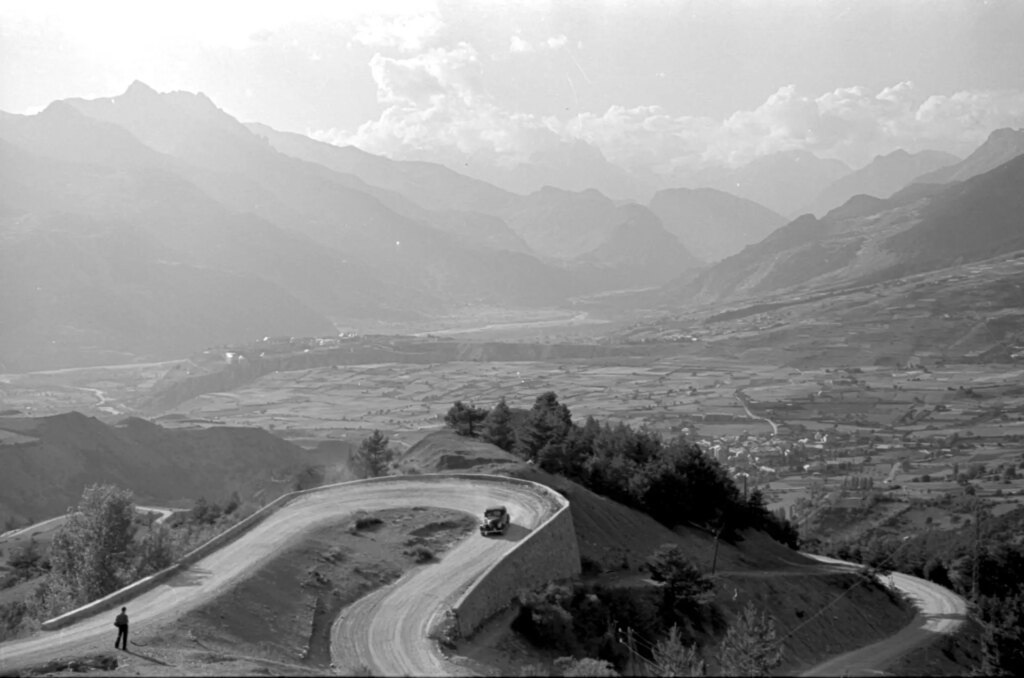
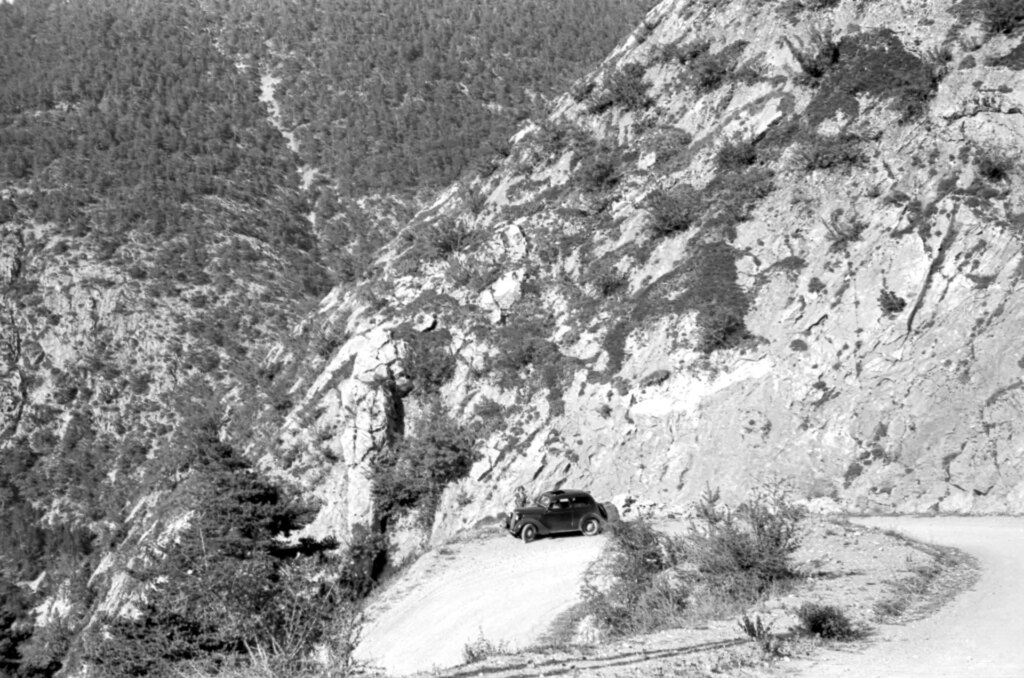
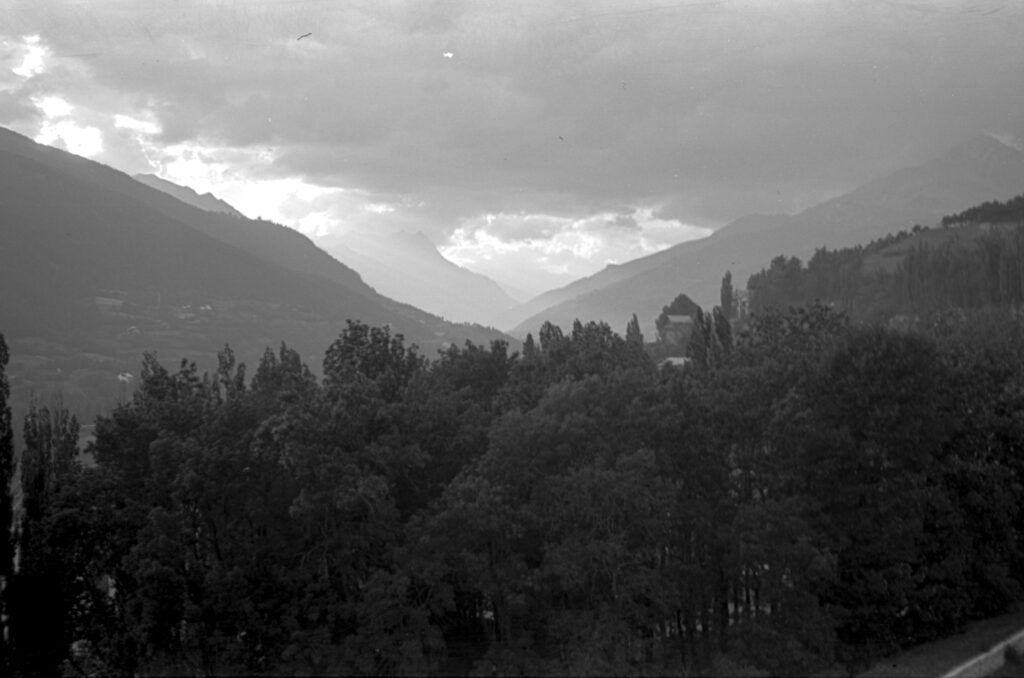
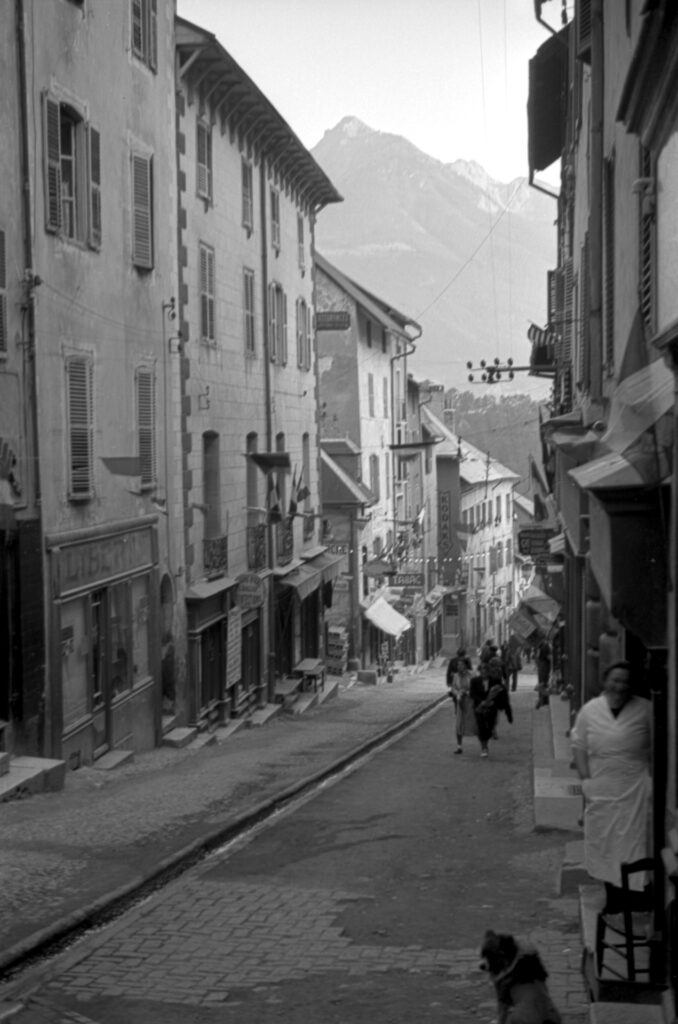
So wherever they had been and how much time as passed since Bayasse the next five images are looking south and north from the Col du Galibier, the north entrance to the tunnel and the descent the other side. The man on the left in the last photo is from the mystery couple pictured here as he is often is, carrying what appears to be a large black camera, a reflex plate-camera?
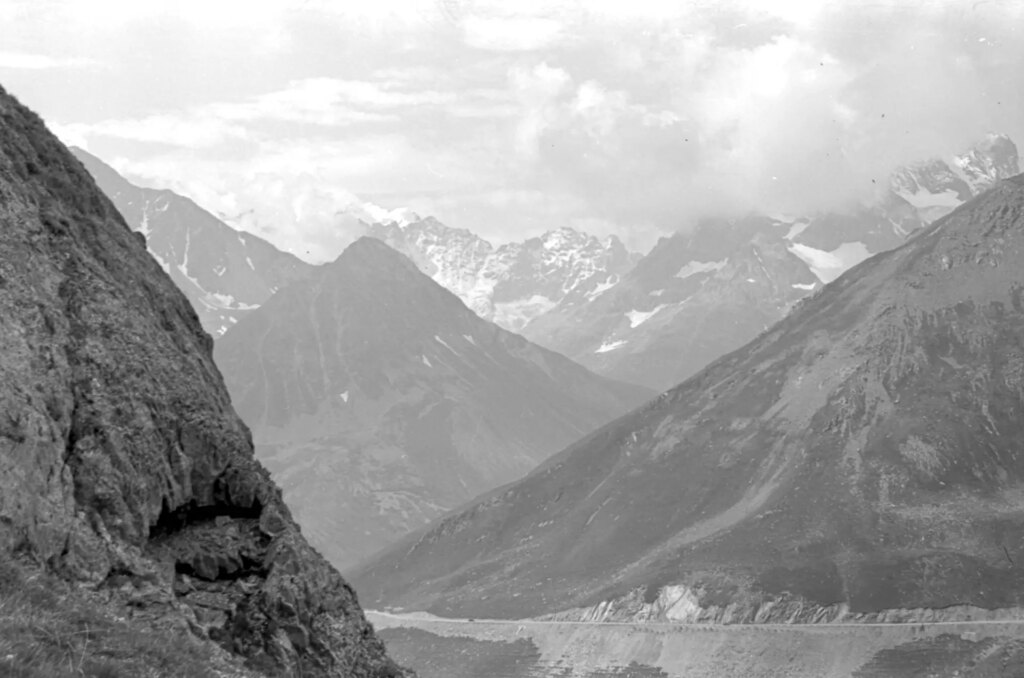
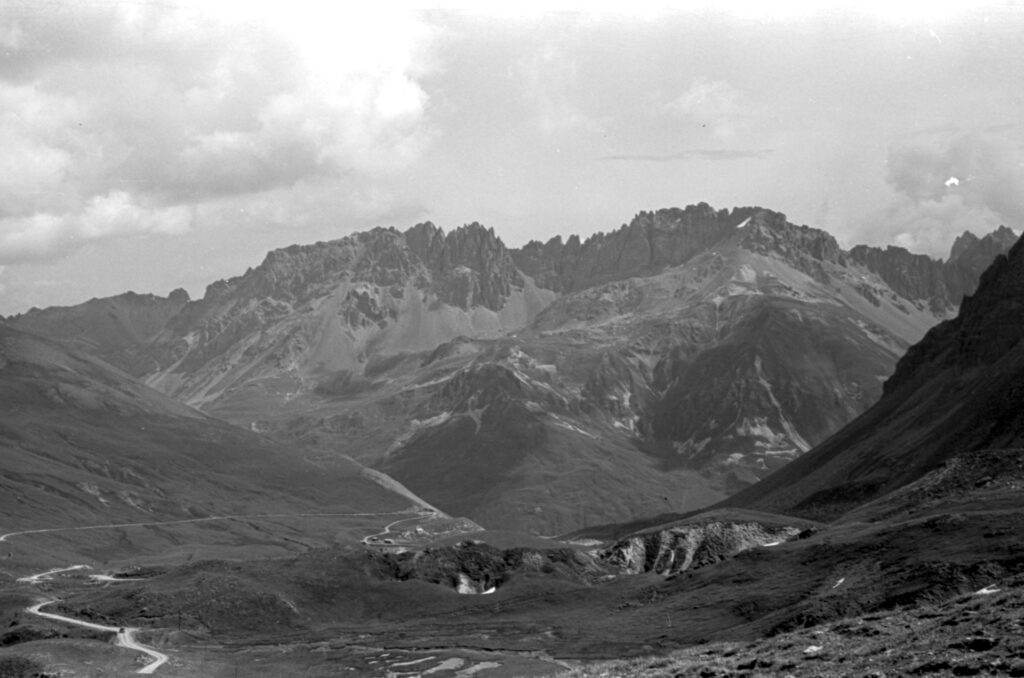
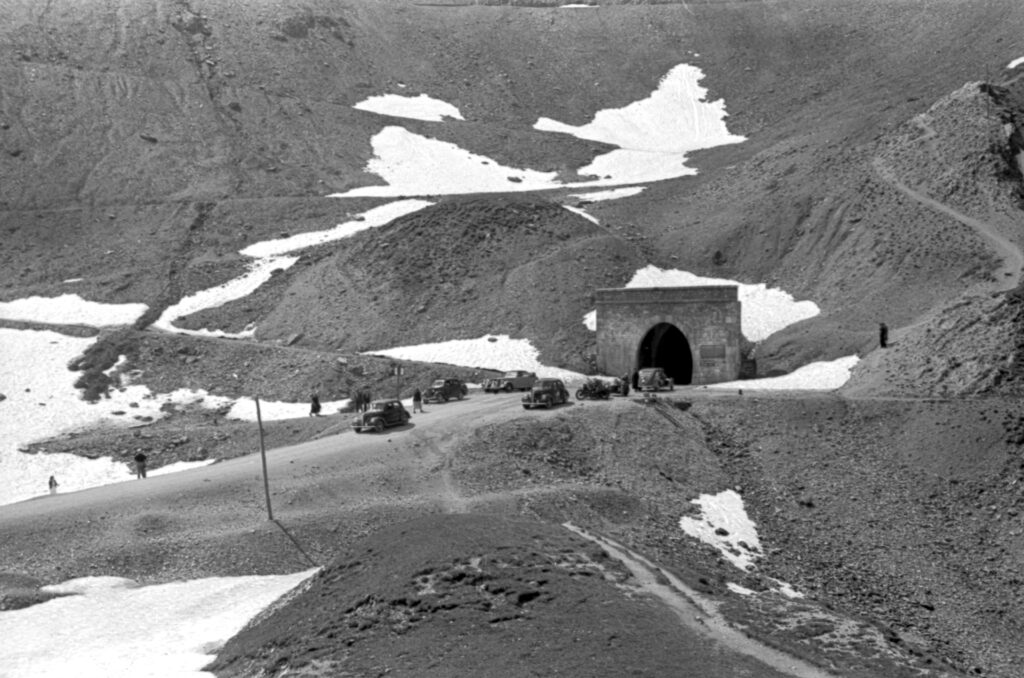
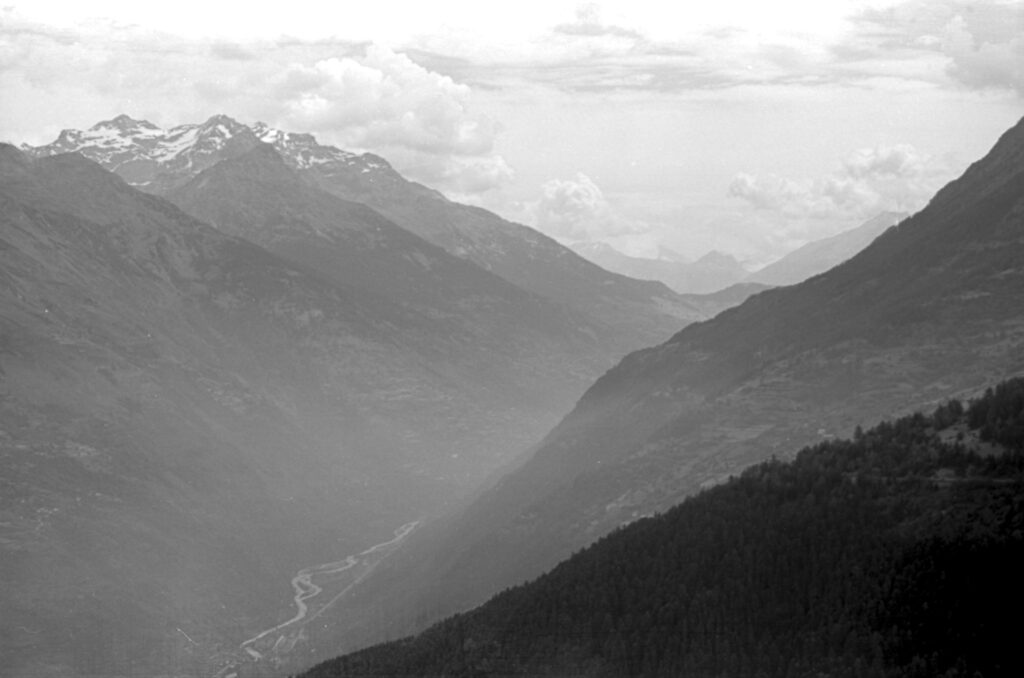
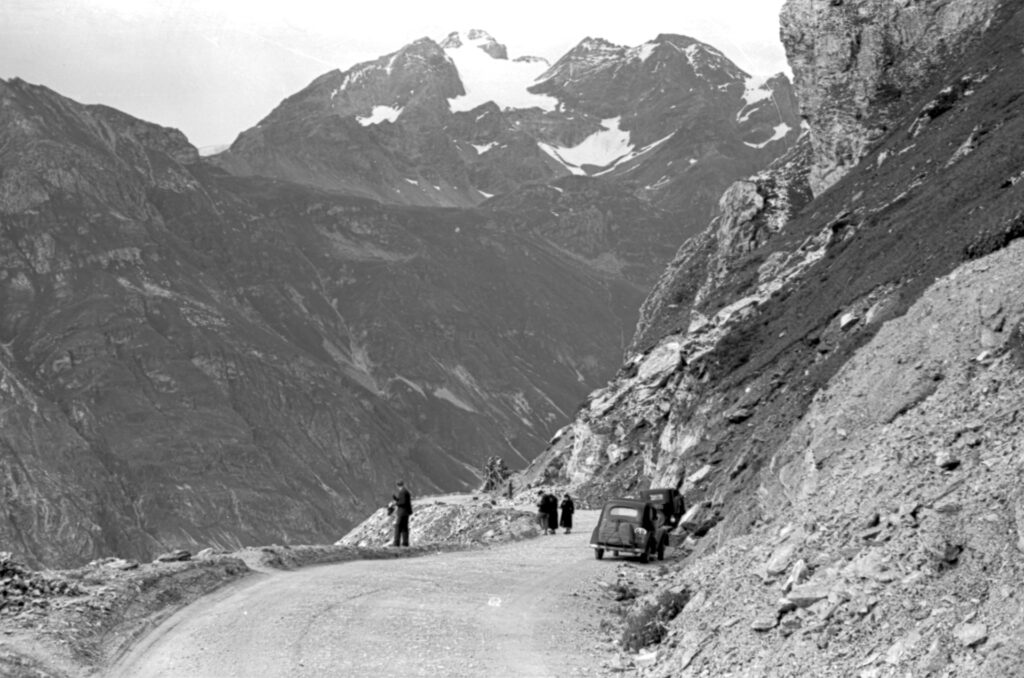
Then there is a another jump in location and maybe time as well as the next three photos are of Annecy 130 miles further north. The first two are from the same location, the last looking back towards the first, you can find the scenes easily enough on Streetview though the women doing the washing are long gone.
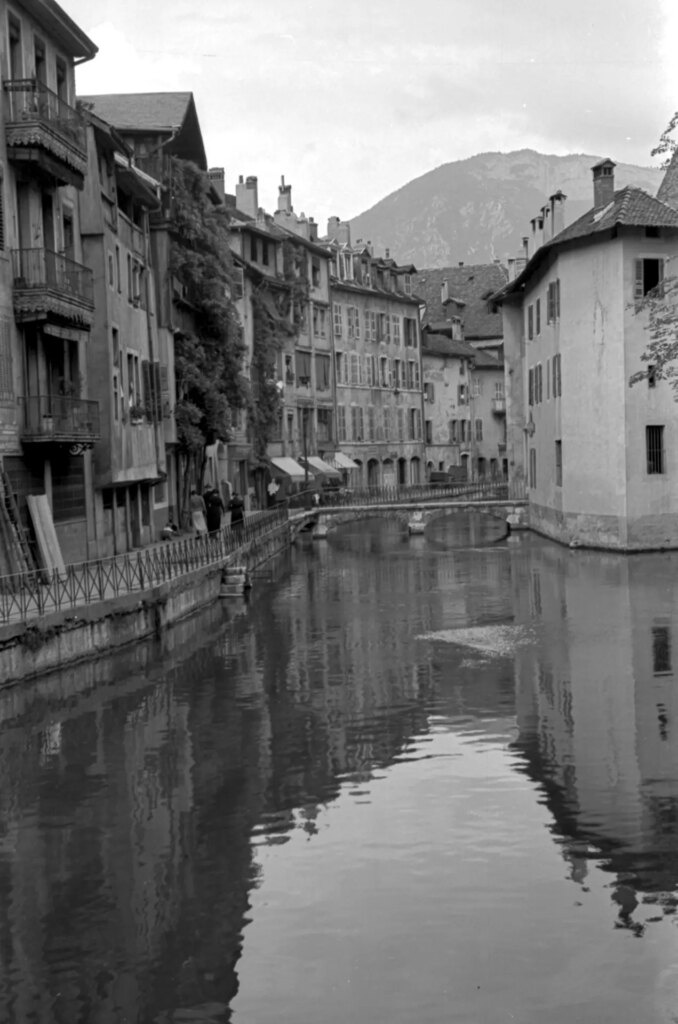
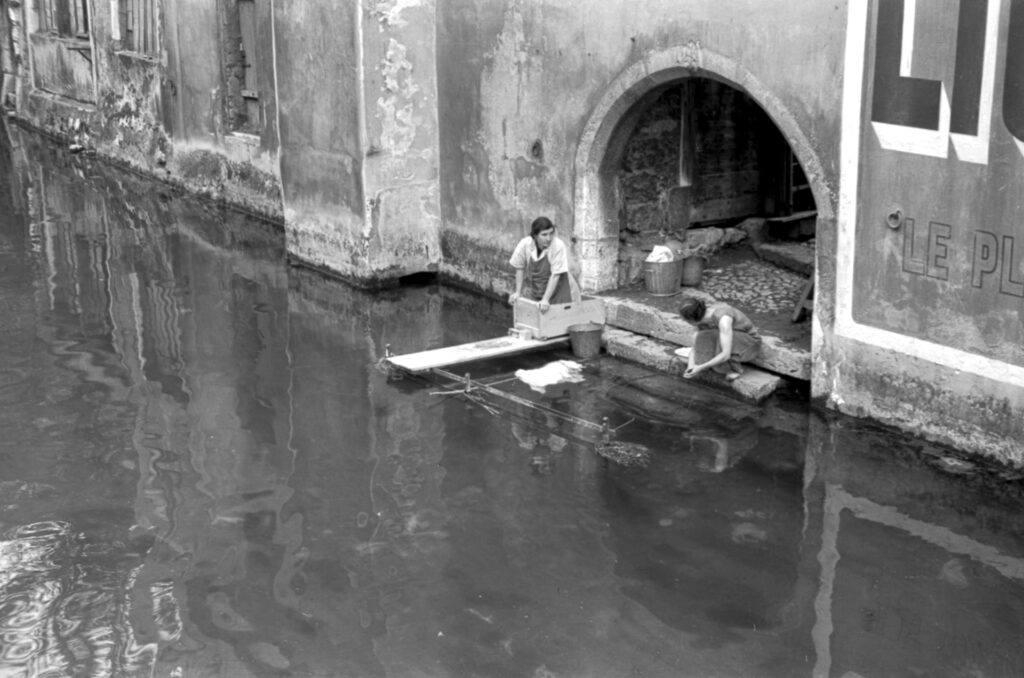
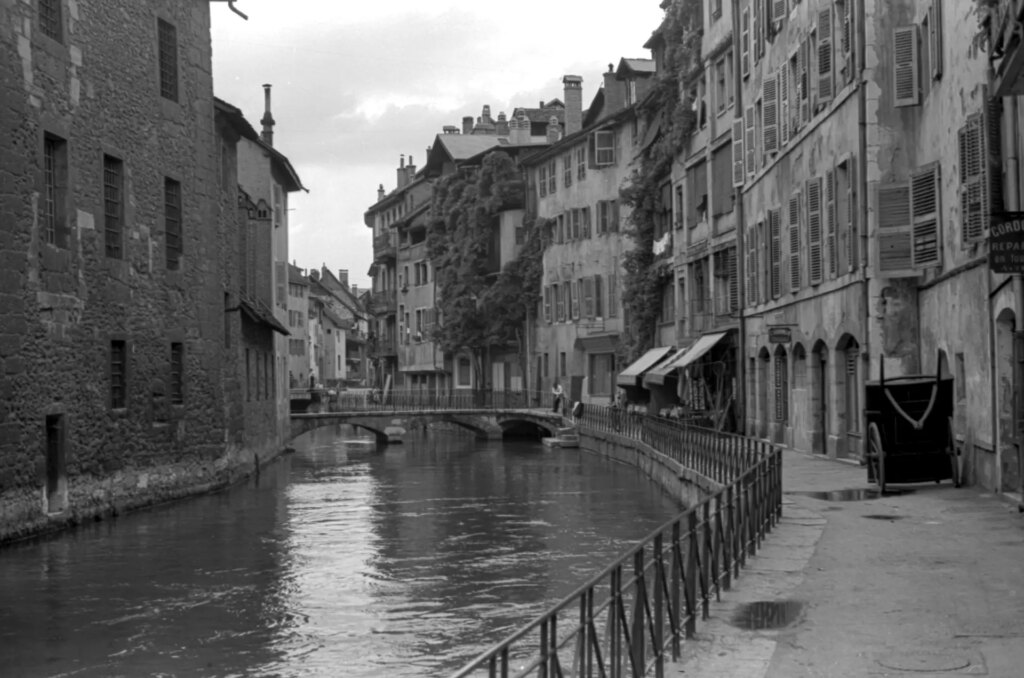
Now a warning, the next photos show some very irresponsible behaviour, these are adults in their late 30’s with young children in the care of family back home.
That is a lot of water going through what I assume to be one of the hydro-electric barrages near Annecy, which perhaps explains the lack of photographs since Galibier. I have not managed to place which barrage exactly, probably they have been much re-built over time. My grandmother in frame 35 looks terrified in close-up, the male half of the other couple looks to be re-assuring her while holding one camera and with another at his feet. Of his wife there is no sign, though that could be her looking down from the bridge in frame 37.
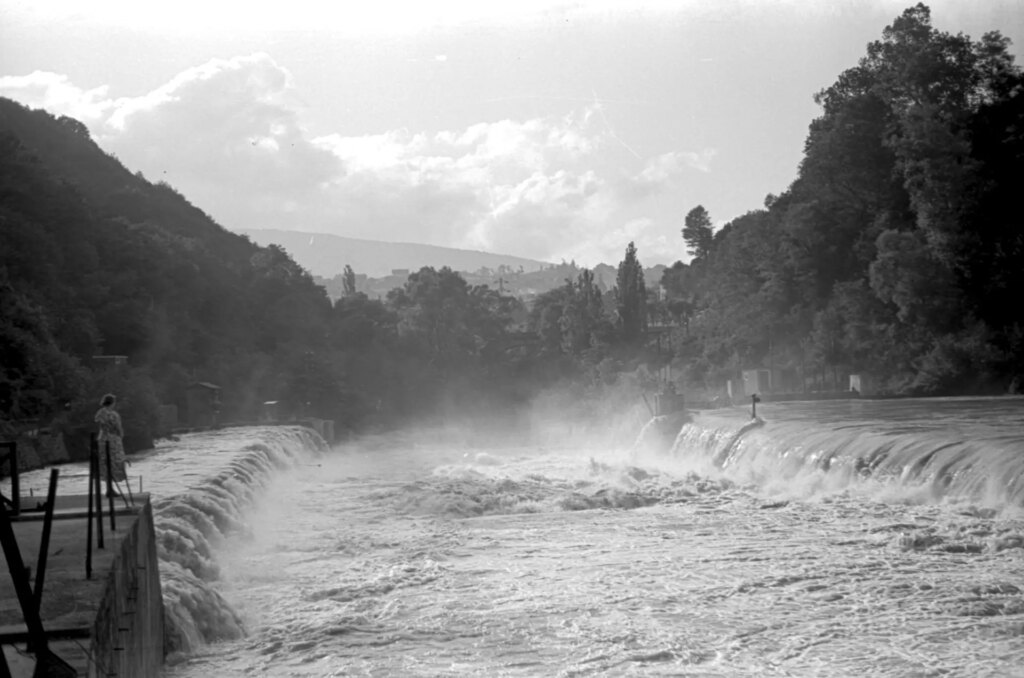
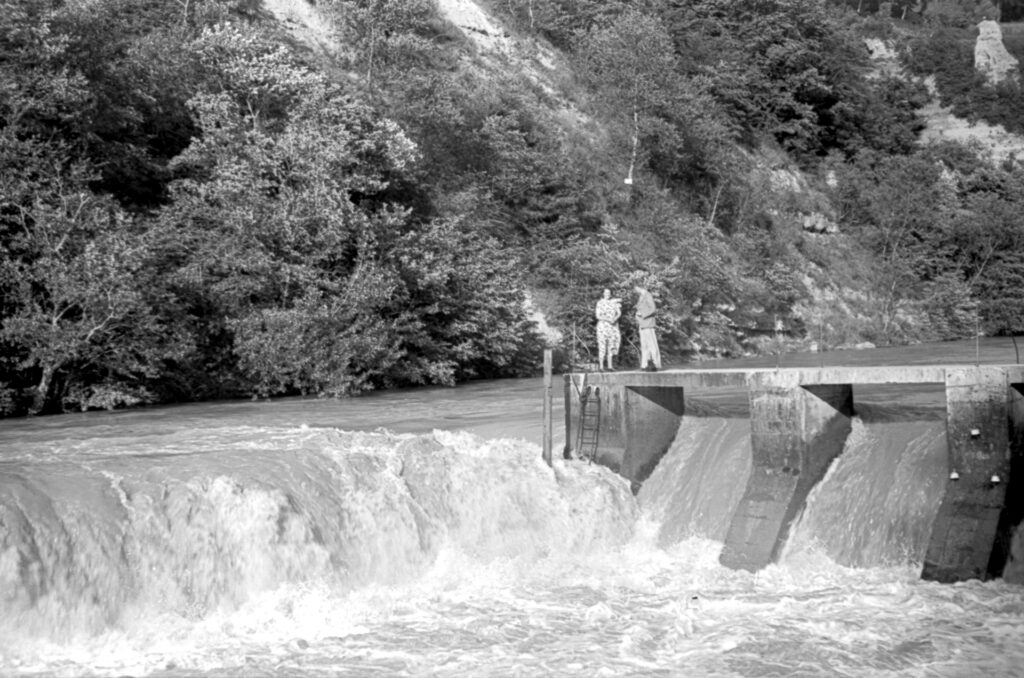
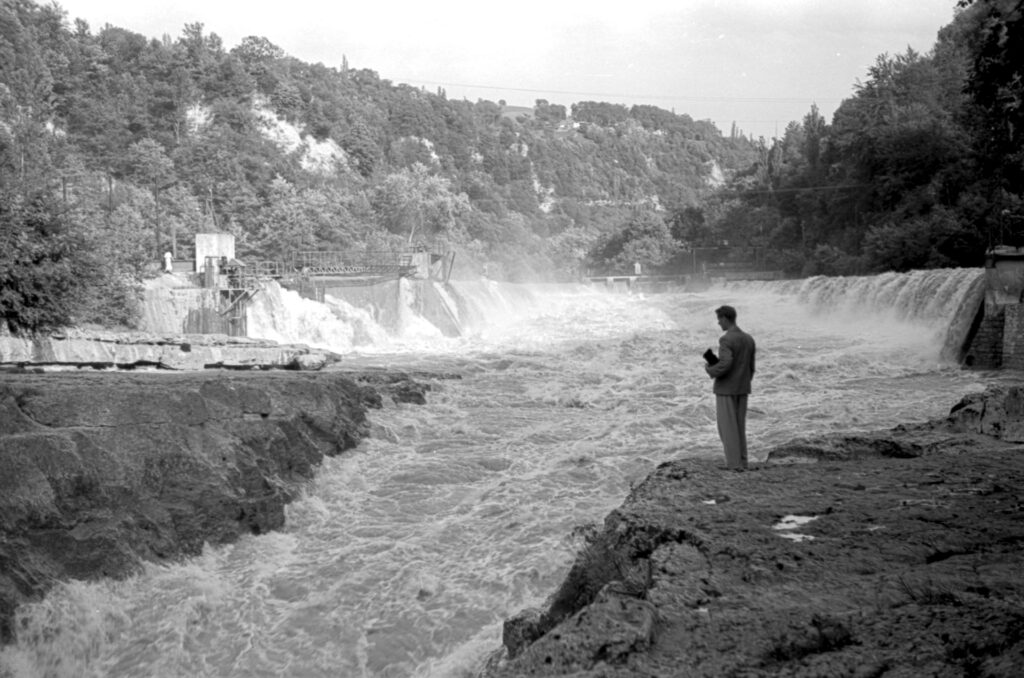
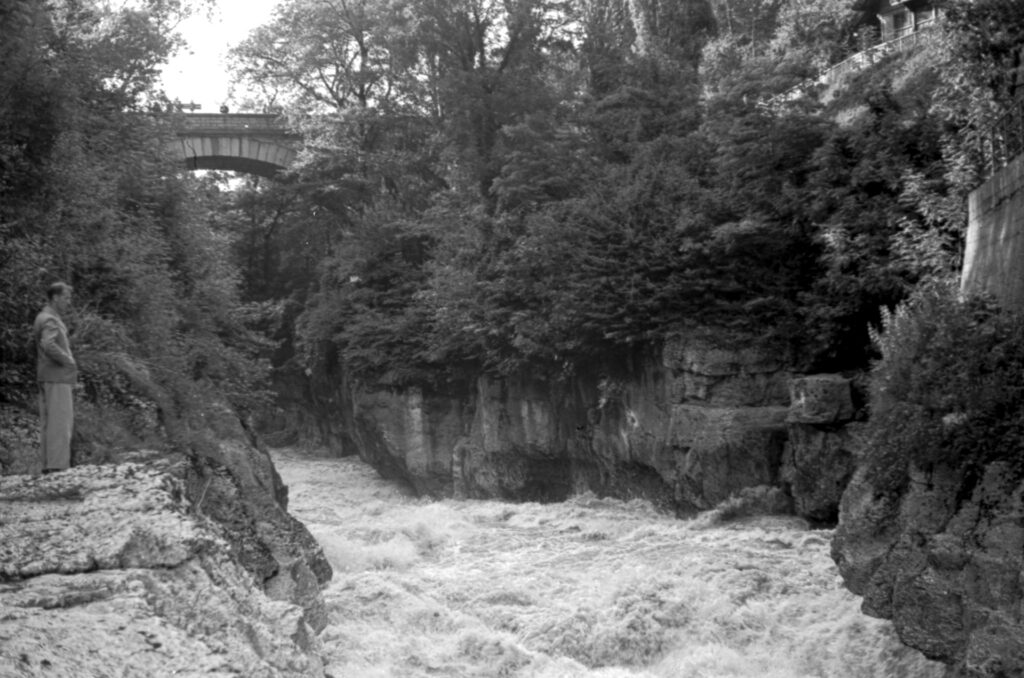
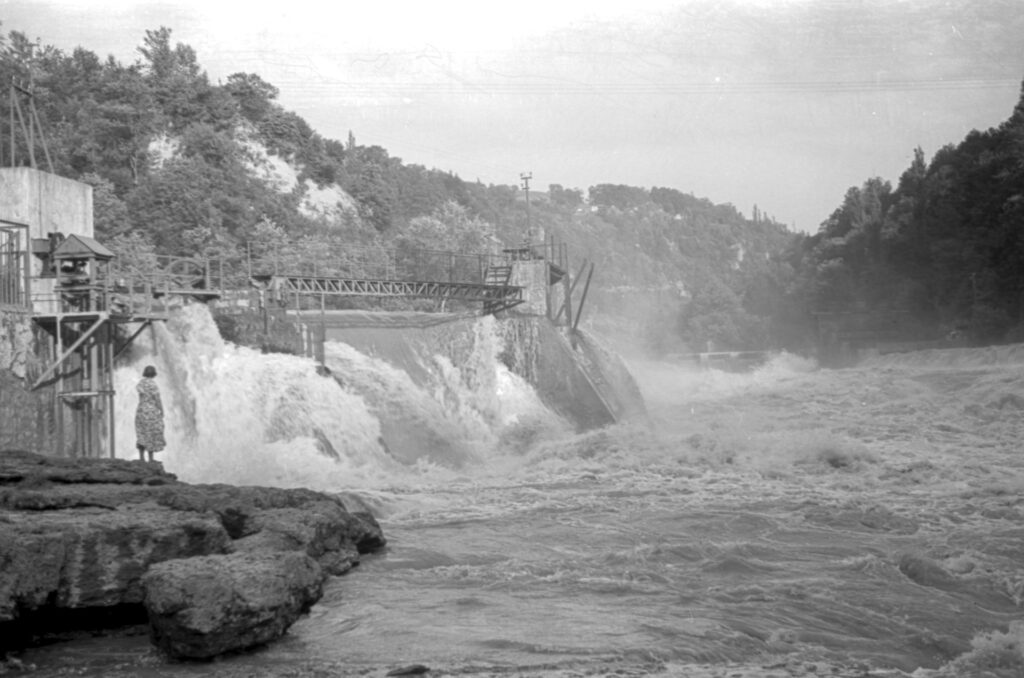
Finally a shaky photo of an alley, back in Annecy probably. My grandfather surprised perhaps that he managed to squeeze that many images from a cartridge.
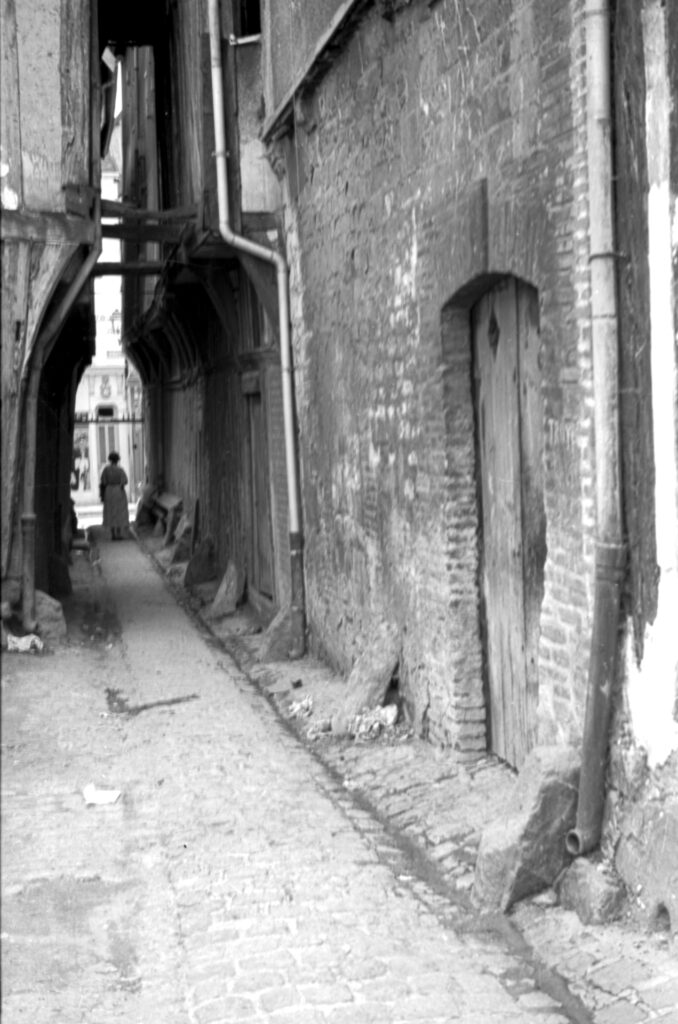
I should say as a footnote that my Grandfather was taught well in the art of photography. His great-uncle, my great-great-grandmother’s brother, was Percy Lund who also edited The Practical Photographer magazine under the pseudonym Matthew Surface.
Share this post:
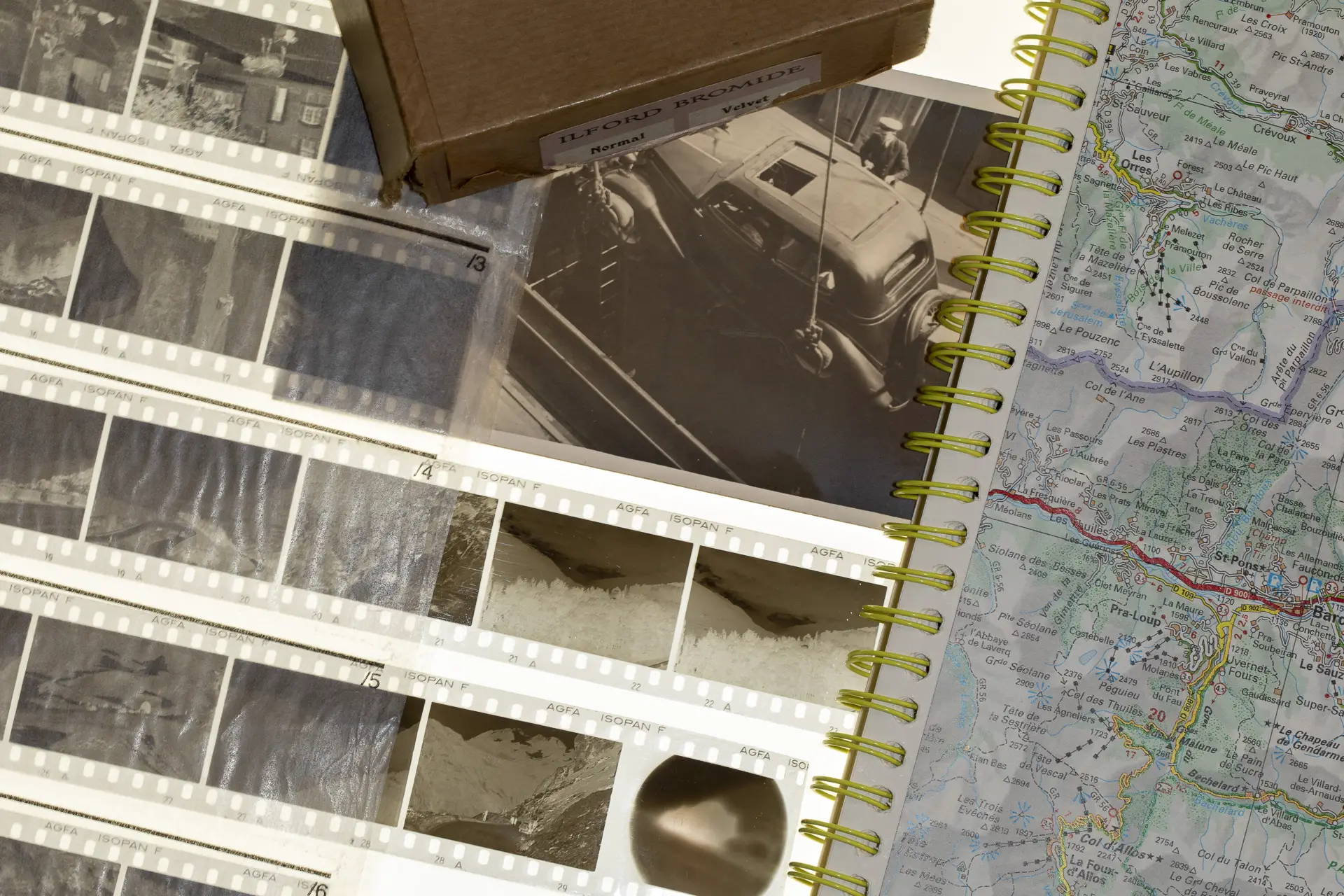
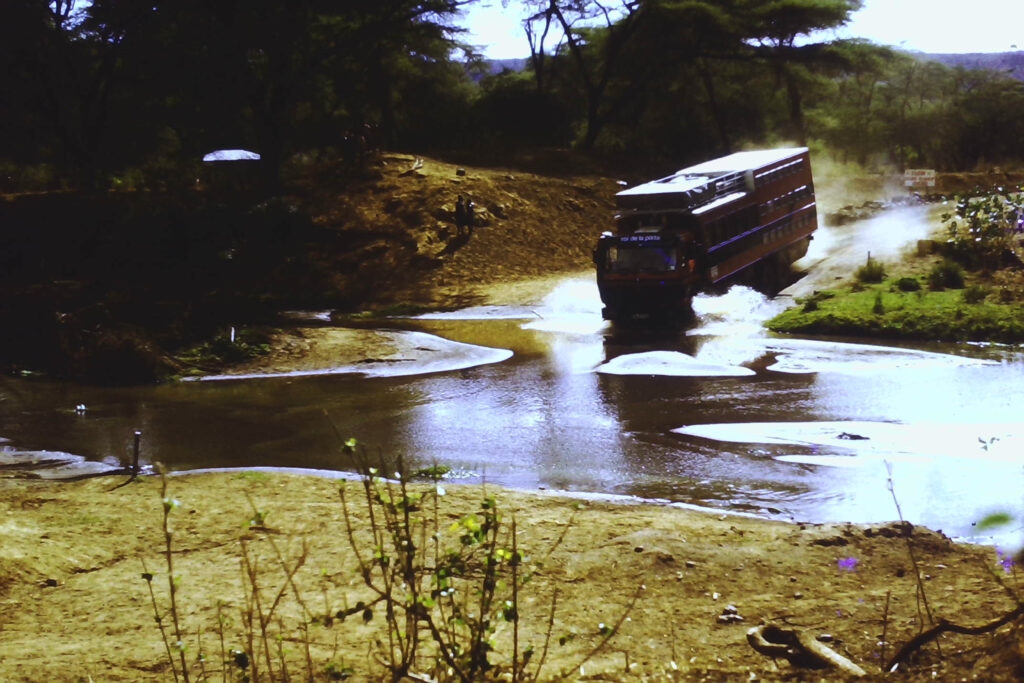
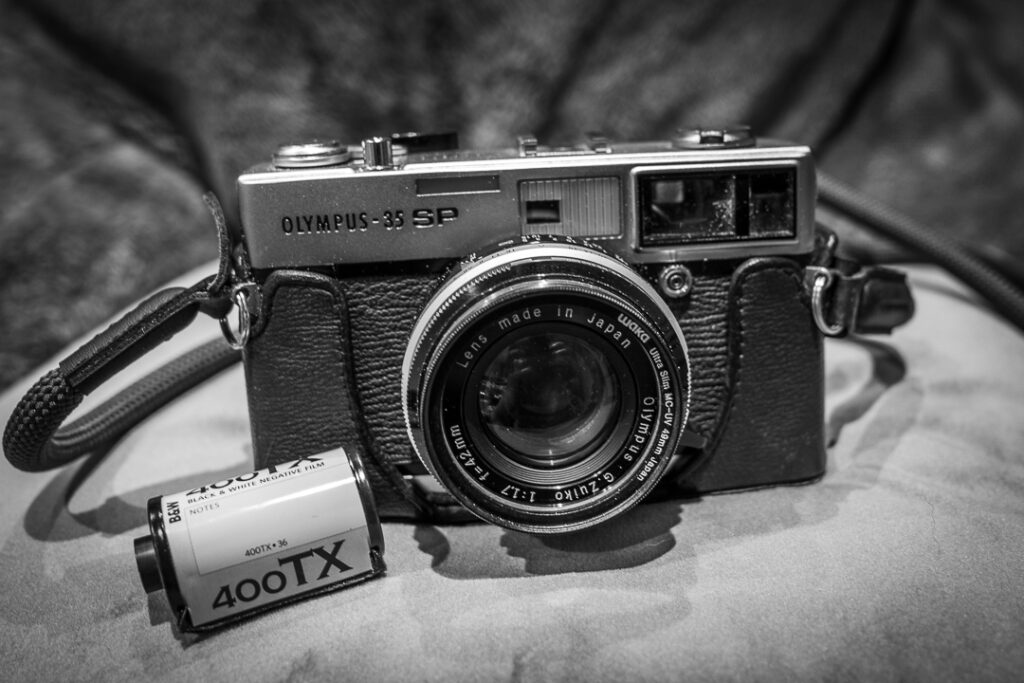
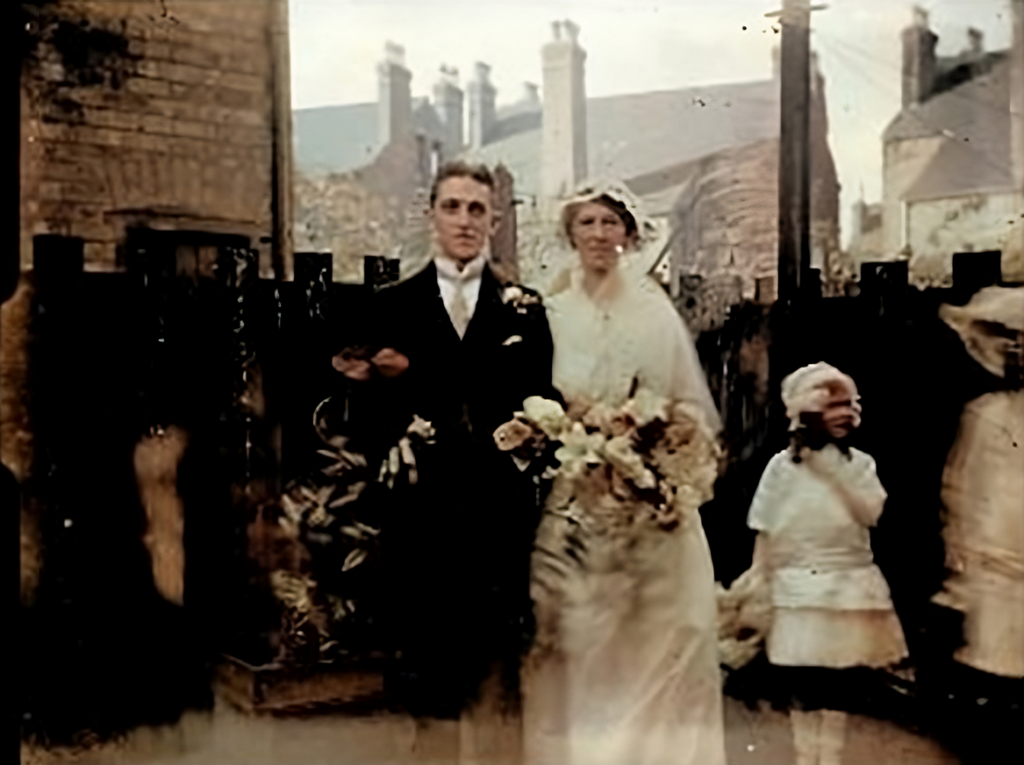
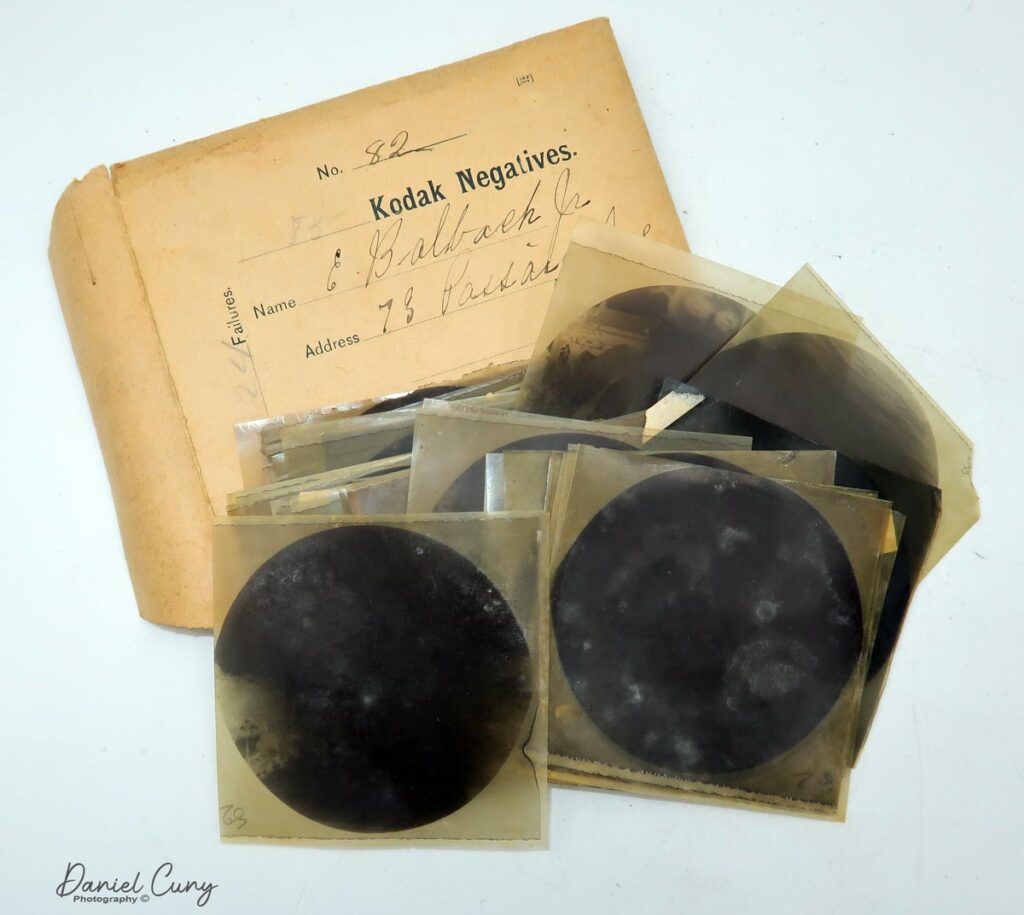




Comments
Frederik on A Roll of My Grandfather’s Film – Agfa Isopan on his Leica I
Comment posted: 30/11/2023
Peter Roberts on A Roll of My Grandfather’s Film – Agfa Isopan on his Leica I
Comment posted: 30/11/2023
Reinhold on A Roll of My Grandfather’s Film – Agfa Isopan on his Leica I
Comment posted: 30/11/2023
Anthony on A Roll of My Grandfather’s Film – Agfa Isopan on his Leica I
Comment posted: 30/11/2023
Comment posted: 30/11/2023
Alexander Seidler on A Roll of My Grandfather’s Film – Agfa Isopan on his Leica I
Comment posted: 01/12/2023
Geoff Chaplin on A Roll of My Grandfather’s Film – Agfa Isopan on his Leica I
Comment posted: 01/12/2023
As you say his photographic skill was significant, I wish I got as many successful photos per roll!
Comment posted: 01/12/2023
Comment posted: 01/12/2023
Nikojorj on A Roll of My Grandfather’s Film – Agfa Isopan on his Leica I
Comment posted: 01/12/2023
The frames 19 to 21 are in the descent from the Col de Vars to Guillestre on N202 (now D902), you can see the Montdauphin fort on the 20 (taken from around 1350m above Peyre Haute?).
See the historical maps on https://www.geoportail.gouv.fr/carte?c=6.652842005651634,44.64296650632443&z=14&l0=ORTHOIMAGERY.ORTHOPHOTOS.1950-1965::GEOPORTAIL:OGC:WMTS(1)&l1=GEOGRAPHICALGRIDSYSTEMS.MAPS.SCAN50.1950::GEOPORTAIL:OGC:WMTS(1)&permalink=yes
Comment posted: 01/12/2023
Comment posted: 01/12/2023
Comment posted: 01/12/2023
Nikojorj on A Roll of My Grandfather’s Film – Agfa Isopan on his Leica I
Comment posted: 01/12/2023
Comment posted: 01/12/2023
STEVEN KOTAJARVI on A Roll of My Grandfather’s Film – Agfa Isopan on his Leica I
Comment posted: 01/12/2023
Steviemac on A Roll of My Grandfather’s Film – Agfa Isopan on his Leica I
Comment posted: 02/12/2023
Scott Gitlin on A Roll of My Grandfather’s Film – Agfa Isopan on his Leica I
Comment posted: 12/12/2023
Comment posted: 12/12/2023
Comment posted: 12/12/2023
jason gold on A Roll of My Grandfather’s Film – Agfa Isopan on his Leica I
Comment posted: 31/03/2024